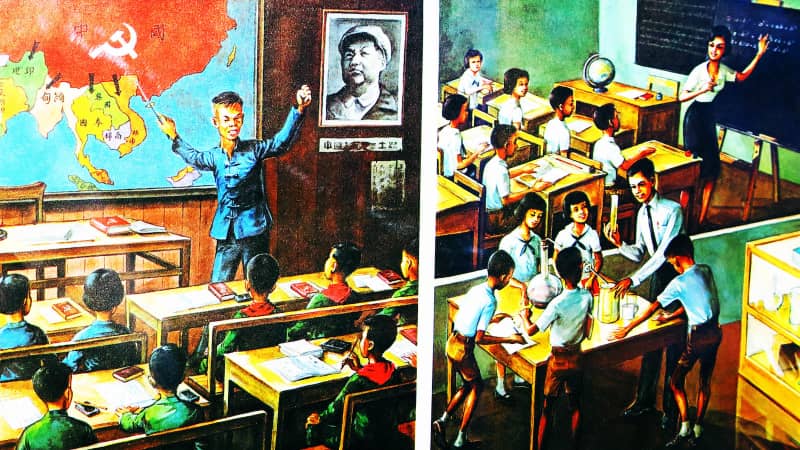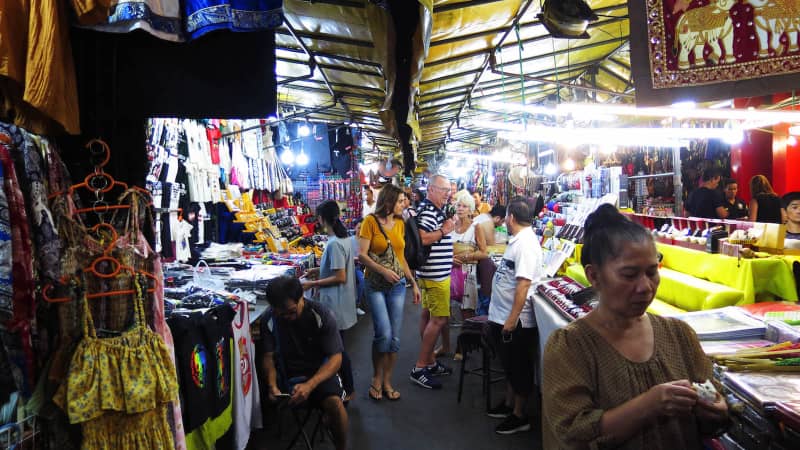Products You May Like
Bangkok (CNN) — Prostitution, the CIA, the Vietnam War and Chinese immigration are all on display in a new museum dedicated to one of Bangkok’s most famous red light nightlife zones, Patpong Road.
But documenting Patpong’s unofficial ties to the US Central Intelligence Agency’s deadly activities in Laos during the US-Vietnam War in the 1960s until 1974 is the museum’s most fascinating purpose.
The 300-square-meter Patpong Museum, which opened in October, reveals why Americans fighting communists on battlefields flocked to Patpong for business, friendship and hedonistic trysts during the war.
It also shows how Patpong evolved over time to attract hundreds of thousands of tourists and expats, before most of the action moved across town to bars elsewhere in Bangkok — namely Soi Cowboy and the Nana Entertainment Plaza.
The lesser known side of Patpong
“I’d say today everybody knows Patpong,” says Messner. “But nobody really knows what Patpong is about. People associate it with a very narrow segment today, and it would be ‘Patpong ping-pong,’ something like this. And we’ll get to ping-pong, we’ll show that too, but there is so much more.”
Messner is well placed to open such a venue. After managing a museum in Austria in the 1990s, he says he turned his attention to Bangkok’s nightlife, investing in entertainment venues including some in Patpong.
From banana plantation to red light zone
Patpong Road’s origins date back to a Chinese immigrant, Luang Patpongpanich, who purchased the land when it was a banana plantation.
The museum displays two heavy rice bags connected by a bamboo pole for visitors to lift, a way to experience the burden felt by laborers shouldering 35-kilogram loads.
During World War II, Patpongpanich’s son Udom reportedly studied in America, where he joined Washington’s newly created Office of Strategic Services (OSS) which eventually morphed into the CIA.
The OSS trained Udom to be a Seri Thai (“Free Thai”) insurgent against Japan’s occupation of Thailand, according to museum information, which is supported by a three-page story in Asia Magazine dated May 5, 1985 which includes an interview with Udom, and also in a 1996 obituary in London’s Guardian newspaper.
But the war ended before he returned home.
After Udom arrived in Bangkok, he transformed his family’s land into Patpong Road and lined it with shop houses, which he rented to his OSS and CIA friends, Messner says.
“Mizu’s Kitchen is the first food and beverage place in Patpong, run by a Japanese ex-soldier who was part of the occupational force but he liked it here so much that he wanted to stay,” he reveals.
Other Patpong tenants during those years, according to museum exhibits, included the US Information Service library and “a CIA safe house” above the Madrid Bar where, in later years, retired CIA officials reportedly drank and met buddies.
Alongside these bits of info, the museum displays photos of late CIA officer Jack Shirley taken in the Madrid Bar, which is still open.

Exhibitions include this piece of anti-communist propaganda produced by the Thai government during the 1970s.
Richard S. Ehrlich
Air America’s Bangkok office was in the Air France building on Patpong until 1972.
At least 240 Air America pilots and crew members died from enemy fire, according to multiple reports.
“Secret wars… a secret service airline that had its headquarters in Patpong Road,” says Messner. “And with it, of course, came the people that worked for this airline, and they started to hang out here. There are many things we have been given by an ex-Air America pilot throughout the exhibition.”
Among these is a typewritten letter with an Air America logo from 3 Patpong Road telling parents their son disappeared after a plane was shot down above Laos in 1963.
Anti-communist propaganda produced by the Thai government during the 1970s is also displayed, portraying China’s strident political indoctrination under Chairman Mao Zedong, juxtaposed with a depiction of Thailand’s orderly, practical school lessons.
The legend of Tony Poe

Fake rubber ears: An artistic interpretation of CIA paramilitary officer Tony Poe’s order to his Hmong fighters to cut off ears.
Richard S. Ehrlich
Inside the museum, a corner is dedicated to a man who’s widely considered to be the world’s most macabre CIA paramilitary officer, Tony Poshepny — “one of the most famous and controversial characters that have visited Patpong often,” says Messner.
Popularly known as Tony Poe, he was based in northern Laos for several years, beginning in the early 1960s, and reportedly led thousands of minority ethnic Hmong in bloody, scattered fighting against communist Pathet Lao forces and their North Vietnamese allies.
To confirm that his Hmong rebels were killing Pathet Lao, Poe ordered them to start “cutting off people’s ears and heads,” says Messner.
When the American Embassy in Laos criticized Poe for his violent methods, he took some hacked-off ears, “put them in a bag, and sent that” to then-Ambassador G. McMurtrie Godley, shocking the diplomat and his staff.
Poe also took “cut-off heads and threw them out of helicopters at least on two occasions” at high-ranking Pathet Lao, Messner says.
It was “psychological warfare,” says Messner, pointing to photos, weapons and other items symbolizing America’s war in Laos, Cambodia and Vietnam.
“This is five ears, human ears, cut off and assembled on a chain so you could wear it on a necklace or something,” he notes, referring to a nearby display featuring fake rubber ears — an artistic interpretation of Poe’s order to his Hmong fighters to cut off ears.
Poe didn’t create such a necklace or wear one but, Messner says, the “cut-off ears are a fact established by many first hand sources, and became part of the myth around Poe. We take the liberty to communicate that visually in a way that is impactful to the viewer.”
Patpong’s seedy side
A Patpong Museum would not be complete without exhibitions documenting the road’s most famous attractions.
The museum recreates a slice of Patpong’s former Grand Prix bar, including a 3-D projection of a bikini-clad go-go dancer.
Elsewhere a woman’s silhouette has, between her thighs, an industrial-strength ping-pong training machine, which pumps white balls at viewers to catch.
“Here on Patpong, everybody wants to see the ping-pong show,” says Messner.
Instead of portraying a live woman, who doesn’t use a machine, the museum constructed this “interactive” display.
Other displays that may make some visitors uncomfortable include a video featuring a bar worker preparing to perform with a live goldfish during a 2013 bestiality show.
Meanwhile, Oculus Virtual Reality goggles allow people to explore Patpong’s current S&M fetish bar.
Elsewhere, a wall-mounted “game” invites visitors to look at photos of Thai women and guess if they were born female.
But the museum and its exhibits aren’t impressing everyone — a near certainty given the subject matter.
Bangkok-based journalist Tom Vater is among those expressing mixed feelings about the space.
“The US killed some four million people during its wars in Southeast Asia when Patpong was in full bloom,” says Vater, co-writer of the documentary film, “The Most Secret Place on Earth: America’s Covert War in Laos.”
“I went [to Patpong] several times during the film’s research, particularly to the Crown Royal Bar and the Madrid Bar to talk to ex-CIA, USAID and Air America staff,” he says.
“Most of the former soldiers, pilots, secret service staff and mercenaries I met were polite, helpful and very open about their wartime experiences. The men who frequented the bars in Patpong were, as often as not, murderers engaged in crimes against humanity. That should give pause for thought about what kind of museum might be established here.”
Today’s Patpong: More shopping than sleaze
In response to criticism about his museum, Messner notes that the Vietnam War is an established fact in history.
“People die in war, and in today’s world this becomes more and more an abstract thing,” he says.
“Giving the war and the killing a face, creating controversy, that is the objective of a living museum. We do not condemn or glorify Tony Poe and anyone involved in the war.”
Today, Patpong’s two parallel neon-drenched lanes off busy Silom Road still feature bars where women dance on stage and hustle drinks.
But most visitors prefer the bustling Patpong Night Bazaar. Outdoor stalls fill Patpong Road every night, selling souvenirs, jewelry, luggage and handicrafts alongside counterfeit wristwatches, fake designer fashion accessories and other popular items.


